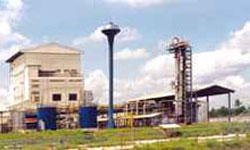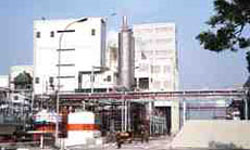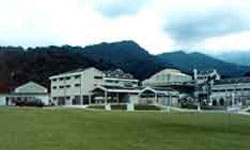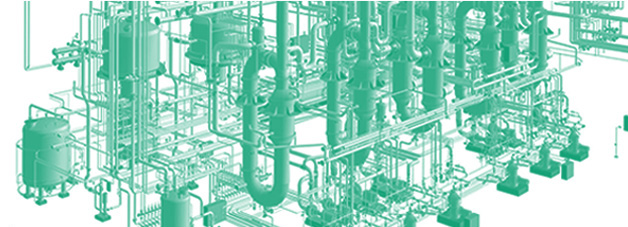Cellulose Products
Contact Persons
Tel. +49 - 221 - 37 92-0
Fax +49 - 221 - 37 92-299
Cellulose Ethers
CMC, MC, HEC, HPC etc.
Cellulose Ethers are frequently used as viscosifiers, thickeners, binders, suspending agents, film formers, protective colloids, and stabilizers in nearly all industrial fields, such as the food, building, ceramics, drilling, textile, detergent, and cosmetics industries. Due to their versatility, Cellulose Ethers are a constantly growing global market.
The group of Cellulose Ethers is mainly represented by:
- Carboxymethylcellulose (CMC)
- Methylcellulose (MC)
- Hydroxyethylcellulose (HEC)
- Hydroxypropylcellulose (HPC)
- various mixed Ethers based on the aforementioned types.
All Cellulose Ethers are made by etherification of Alkali Cellulose, which itself is obtained by processing Cellulose with Caustic Soda solution. Etherification with Monochloroacetic Acid will then give Carboxymethylcellulose, etherification with Methyl Chloride will give Methylcellulose, and so forth. With Cellulose being the basic and most important raw material for the process, our customers of course profit very much from our deep knowledge of processing Linters to chemically pure Alpha-Cellulose.
For each of the above-mentioned Cellulose Ethers, we can offer a tailor-made process that is highly reliable, safe, and economical.
Long-standing experience gathered in MEISSNER projects all over the world, and the dedication to constantly improve our processes in the company-owned pilot plant, enable us to provide our customers with the latest and most efficient process technology in this field.
Nitrocellulose
NC

The nitration (esterification) of Cellulose with a mixture of Nitric and Sulfuric Acid was discovered in the mid-19th century by the German chemist Schoenbein. The special properties of Nitrocellulose (NC) soon found wide application, e.g. in the explosives industry, and led to Nobel's development of dynamite.
Still today, Nitrocellulose is an important ingredient of explosives mixtures, such as propellants like single-, double- and triple-base powders as well as rocket propellants, or the above-mentioned dynamites.
The process as offered by MEISSNER is the result of long-standing development work and decades of experience in the manufacture of all grades of Nitrocellulose.
The main features of this highly modern Nitrocellulose process are:
- continuous nitration
- recovery of adhered acids
- efficient absorption of nitrous fumes
- application of a heat-recovery system
- application of the latest refiner technology
- continuous dehydration and alcoholization of Nitrocellulose
- highest safety standards
- improved product qualities.
The flexibility and efficiency of the process allow for the production of all grades of Nitrocellulose and perfectly combine economic efficiency, safety, and environmental aspects.
Linters Processing

Besides Wood Cellulose, purified Cotton Linters are the biggest and most important source of chemical Alpha Cellulose. Compared to Wood Cellulose, Linters offer significant advantages, such as higher purity, higher viscosity, higher brightness, and a lower content of hemi-celluloses. These characteristics make purified Linters the ideal cellulose raw material when it comes to manufacturing high-quality products, such as tissue, gazes, high-quality paper for bank notes, Nitrocellulose and Cellulose Ethers.
The raw Cotton Linters, which are a by-product of the cotton-fibre industry, are made into purified Linters (Chemical Cotton) by mechanical cleaning, kier-boiling with Soda Lye, and bleaching steps. In this way, mechanical impurities, waxes and fats are removed and the fibre itself is brightened, while care must be taken to maintain the chemical reactivity of the fibre throughout the process.
MEISSNER has been working in the field of Raw Linters Processing for many decades now and has successfully developed its own process for the manufacture of high-quality Chemical Cotton - an ideal raw material for the production of Nitrocellulose, Cellulose Acetate, Viscose, and Cellulose Ethers such as CMC, MC, HEC, HEMC, HPMC, and HPC.
An optimised process design (counter-current flow of the process water) makes it possible to minimise the consumption of fresh water and chemicals like Soda Lye, bleaching agents and additives, as well as the effluent volume, while at the same time boosting the product quality.
The process offered by MEISSNER thus represents cutting-edge technology in the field of Linters Processing.

 DE
DE  EN
EN 